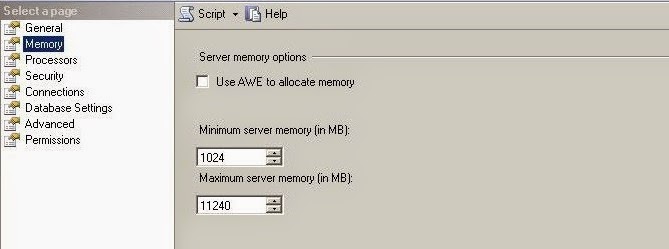SQL Server - Instance level memory settings and usage

After several pure T-SQL posts, today I thought to write about a post which discuss more about the MS SQL Server instance level properties and try to shed more light on it. In this post I'll talk about the most commonly used property i.e. memory settings. Although many of us have seen this option and many are very much familiar but let us revisit it to check whether we are using it or understand it the way it should be. Though on memory page we see five option but in this post we will talking more about only three, which are "AWE", "maximum server memory" and "minimum server memory" . First up is " AWE " which is short for " A ddress W indowing E xtensions". It is special API built when the 64 Bit architecture was introduced and applications were still in phase where they were need to be fully ported on it. As most of us know that 32 Bit application can use only of 2-3GB of physical memory (depending on the OS option used